“I don’t care about being respected. I’m trying to live as a true Christian.” – Kirk Douglas as Van Gogh
It seems the world over has remained transfixed by the life of Vincent Van Gogh, which is rather ironic since he failed to gain much traction in his own lifetime. For many, he remains one of the obvious prototypes of the tragic artist — the man who cut off his ear — driven to personal and psychological anguish.
I was lucky enough to see an exhibition of his work in Japan charting one of his most unlikely sources of inspiration. The documentary Loving Vincent committed to his style completely to tell his story in the most visually honoring way possible. Don McLean penned a stirring ballad for him on his American Pie record. Van Gogh even garnered his own Doctor Who episode with a very poignant appearance by BIll Nighy. Lust for Life can be added to the varied lineage of cultural artifacts looking to make sense of his career.
I’m always looking for individual ways in which to enrich the staid biopic with something vibrant and singular. Lust for Life starts off promising by hardly acknowledging Van Gogh’s art at all. Instead, he’s a failed minister eventually sent off to help the unfortunate mining classes because it’s the only vocation worthy of him. It’s dreadful work, both dirty and unimaginably dangerous. What makes it worse is the many children forced to labor in the underground mining shafts.
He’s soon inspected by two pompous “God-fearing” men who are scandalized by the life he’s keeping. His impoverished, unkept lifestyle degrades the reputation of the church and lacks a sense of decency in their eyes. They fail to see he takes the claims of Jesus profoundly serious by loving the orphans and widows.
On a later occasion his brother Theo (James Donald) comes to check on him and reason with him. He’s also a well-respected man, but there’s a difference here. They share a deep bond of brotherhood and every time they talk, Theo, who’s so soft-spoken in nature, shows how deeply he cares for his brother.
Eventually, Vincent is persuaded to return to his parents’ home. While it’s a positive progression, he still feels like an unkept out-of-touch outsider on so many levels.
It’s a far fiercer portrait of spiritual conflict and crisis than I was expecting because Kirk Douglas makes Van Gogh burn with something — it’s not just some mundane sense of art and ideas — this is his entire being pushing back against a Christian society and clergymen who don’t understand what they preach.
They live by propriety and rules rather than the authentic humanity that they have been blessed with. However, in the same breath, Van Gogh’s a deeply flawed hero, and though he means well, he struggles with all sorts of ills.
At the same time he’s wildly passionate about love, desperately yearning for someone even when the other person is not drawn to him. It’s painful to witness. He also still kicks against the goads of societal convention. Because those around him deem Christian ministry to be a higher vocation than the common laborer or any tradesman or artist.
He takes a radical philosophy: There are many ways to serve, one man from the pulpit and another from a book or a painting. This is his vision, but he needs guidance and a benevolent mentor advises Van Gogh, “You need skill as well as heart.” About now Malcolm Gladwell might mention the great master gaining his 10,000 hours.
However, he’s still a deeply compassionate creature finding another soul at rock bottom and for a time they comfort one another though bitterness and disillusionment slowly finds their relationship souring. There are other crucial events in his life. The Impressionists Exhibition not only shakes up the art world, it flips his own paradigm upside down.
He lodges with Theo in Paris and brings his usual strife to bear. Later, he makes the acquaintance of Paul Gauguin (Anthony Quinn), an outsider of another kind. This and other inspirations lead to a frenzied output thereafter. One of the noted moments has Van Gogh slumped on a table with a mostly empty bottle. The camera pulls back and we see one of his most famous images before us: The Night Cafe.
I realized that although it serves Minnelli’s tendencies well, there is a literalism in the set design that is at once a simple way for recognition and also leaves little space for the colors inside of the painter himself to bleed into the world.
And yet by the same token, I recognize you could easily make the case that there is some form of empathy in all of this. Whether we realize it or not, perhaps Minnelli has colored the world as Van Gogh sees it and not the other way around. We are seeing his surroundings precisely as the painter does (or Minnelli as well).
I may be wrong, but if I have any conception of the man, it was not that he painted the world as it was in a physical sense. He saw the world like no one else with this fire and passion — this lust — and it was made wholly manifest in his paintings. Not just realism or impression but something more, alive with what only he could offer.
Although the picture begins with intriguing themes of religious faith and the struggles of uncompromised artistic vision, it does seem to boil over into a more simplified narrative of the troubled artist with psychological duress. It’s never able to consider all of its various strands as we watch Van Gogh capitulate.
Douglas’s performance is made by his usual tenacity — this innate weightiness he provides — whether entirely real or partially imagined. At its very best it matches our sense of Van Gogh and his art, not that this is realism or mere mimicry (though Douglas looks pretty convincing); it comes down to this very basic ability to exude passion. I’m not sure it is enough and most of the picture’s other characters are flat in comparison.
However, this too could very easily be by design. Theo is as good and decent a man as they come. Everyone else seems unable to understand Vincent. They can’t cope or appreciate his ardent vitality. Gauguin is closer and even their camaraderie turns into a feud. They come to represent a dichotomy between the artist bankrolled by his brother and the artist who must support himself to keep up with his work.
There’s too much spirit in Lust for Life to get totally hung up on any of its inadequacies as yet another Hollywood-style biopic. It moved me more than might be expected, and it’s easy to see Minnelli’s kinship with Van Gogh, both in their devotion to evocative mood and color and their personal vision as creative minds.
No one dashes splotches of color on a canvas like Van Gogh. It almost feels hurried and unkempt, but there is an unbridled ferocity and energy to them even as paint swirls around and the perspectives unnerve us.
Minnelli seems far more straightforward, and yet there are very few directors with such a prominent eye for all manner of tone and texture. When it comes to the canvas of cinema, he was a luminary in his own right.
I only wish we had gotten a bit more of the famed painter’s existential struggle, but then again, maybe the fact that we don’t know speaks volumes in itself. Because I am fascinated by what the artist Mako Fujimura christens the “mearcastapa.” These are the border-walkers of Beowulf, and he argues artists function much the same way in cultures.
Van Gogh was a man born into a Christian society, sincere in his pursuits, and yet never completely welcomed into the inner ring. Likewise, in the art world, his works along with those of Gauguin and Monet were scoffed at — tantamount to scandalous finger painting compared to the great masters of old.
But if Lust for Life doesn’t answer all the myriad of existential doubts floating around in Van Gogh’s legacy, it’s only necessary to look at his work for further elucidation. Fujimura pointed out something fascinating I had never fully considered. “Starry Night” is one of Van Gogh’s most prominent works, where the world and the terrestrial beings above seem to be untethered and totally erratic, and yet at the center of it all like a lightning rod to ground the whole painting is the spire of a church. It’s not about the building but what it comes to represent.
The painting moves me even more so because there’s this inherent sense that while Van Gogh lived within the chaos — of his own demons and personal struggles — he still had a manner of making sense of the world. It seems to me that this is the calling of artists regardless of color or creed. We seek out beauty and ask questions but we also try and find some semblance of order out of the entropy. Lust for life must be mediated by something greater than ourselves.
4/5 Stars




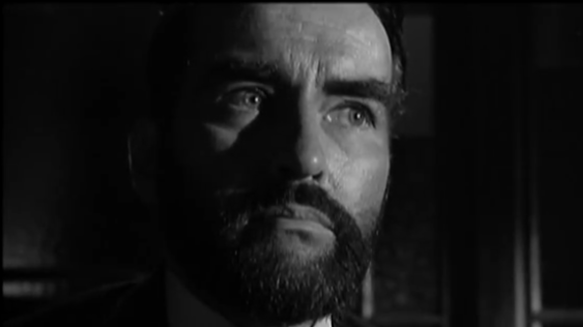

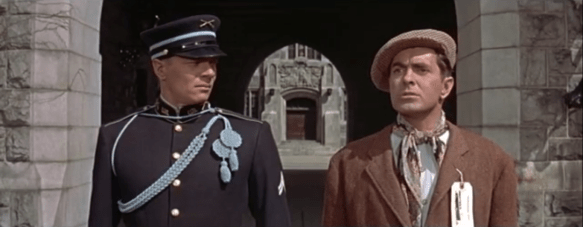
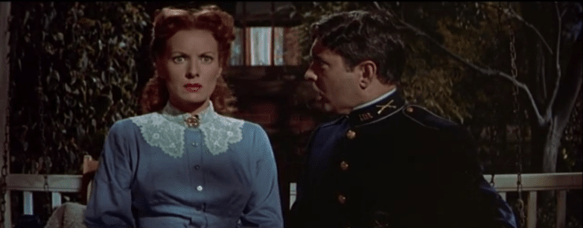
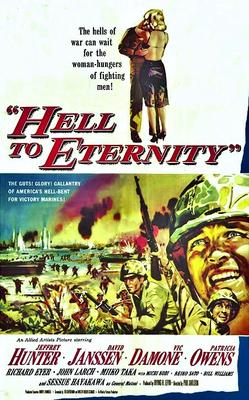 As someone of Japanese-American heritage, it’s become a personal preoccupation of mine to search out films that in some way represent the lives of my grandparents and their generation. This means the rich Issei and Nisei communities of Los Angeles, the subsequent internment camps, and even the famed 442nd Infantry Battalion.
As someone of Japanese-American heritage, it’s become a personal preoccupation of mine to search out films that in some way represent the lives of my grandparents and their generation. This means the rich Issei and Nisei communities of Los Angeles, the subsequent internment camps, and even the famed 442nd Infantry Battalion.



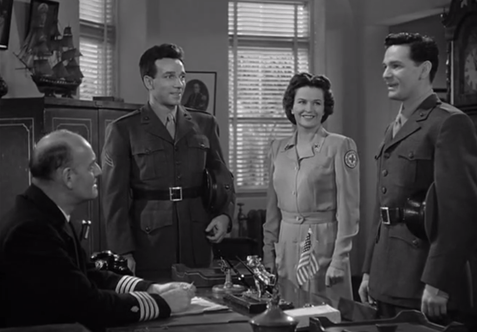

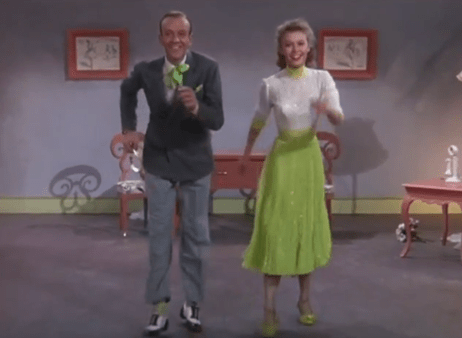

 I Want to Live! calls upon the words of two men of repute to make an ethos appeal to the audience. The first quotation is plucked from Albert Camus. I’m not sure what the context actually was but the excerpt reads, “What good are films if they do not make us face the realities of our time.” This is followed up by some very official-looking script signed by Edward S. Montgomery, Pulitzer Prize winner, who confirms this is a factual story based on his own journalism and the personal letters of one Barbara Graham.
I Want to Live! calls upon the words of two men of repute to make an ethos appeal to the audience. The first quotation is plucked from Albert Camus. I’m not sure what the context actually was but the excerpt reads, “What good are films if they do not make us face the realities of our time.” This is followed up by some very official-looking script signed by Edward S. Montgomery, Pulitzer Prize winner, who confirms this is a factual story based on his own journalism and the personal letters of one Barbara Graham. NOTE: I’m never too concerned about spoilers but just be warned I’m talking about The Irishman, which will come out in November. If you want to be surprised maybe wait to read this…
NOTE: I’m never too concerned about spoilers but just be warned I’m talking about The Irishman, which will come out in November. If you want to be surprised maybe wait to read this…